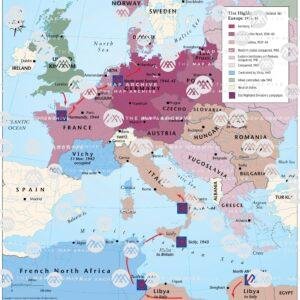Mesopotamia, often referred to as the “Cradle of Civilization,” holds a significant place in human history, geography, and culture. Situated in the Middle East, Mesopotamia’s historical and cultural impact resonates through the annals of time. This guest post delves into the geographical positioning of Mesopotamia on various maps, its significance, and the legacy it has left on the world.
Introduction: Unveiling Mesopotamia
Mesopotamia, meaning “land between the rivers” in Greek, refers to the region between the Tigris and Euphrates rivers, encompassing modern-day Iraq, parts of Syria, Turkey, and Iran. This ancient land witnessed the birth of numerous civilizations, including the Sumerians, Akkadians, Babylonians, and Assyrians. Its strategic location fostered trade, agriculture, and cultural exchange, shaping the course of human history.
Mesopotamia on a World Map
On a modern world map, Mesopotamia occupies a prominent position in the Middle East, bordered by the Tigris and Euphrates rivers. Its geographical coordinates span approximately 33°N to 38°N latitude and 39°E to 46°E longitude. This region’s fertile plains and river valleys supported early agricultural developments and urbanization, laying the foundation for advanced societies.
Historical Significance: Cradle of Civilization
Mesopotamia is widely regarded as the cradle of civilization, where some of humanity’s earliest cities, legal systems, writing (cuneiform script), and monumental architecture emerged. The Sumerians’ innovations in agriculture, irrigation, and governance set benchmarks for subsequent societies. The Code of Hammurabi, an ancient Babylonian legal code, reflected Mesopotamia’s influence on early legal systems.
Mapping Mesopotamia: Ancient and Modern Perspectives
Ancient Maps of Mesopotamia
Ancient maps, such as those from the Babylonian and Assyrian periods, provide insights into how early civilizations viewed and understood their world. These maps often depicted local geography, trade routes, and neighboring kingdoms, emphasizing Mesopotamia’s central role in regional politics and commerce.
Modern Representation on World Maps
Today, Mesopotamia’s geographical boundaries are delineated on contemporary world maps, illustrating its location within the broader context of the Middle East. This depiction highlights its proximity to neighboring regions and its historical importance as a crossroads of civilizations.
Cultural and Architectural Legacy
Mesopotamia’s architectural marvels, such as ziggurats and temples, symbolized spiritual and civic life. These monumental structures served as focal points for religious rituals, administrative functions, and community gatherings. The Hanging Gardens of Babylon, one of the Seven Wonders of the Ancient World, exemplified the region’s ingenuity in horticulture and urban planning.
Influence on Global Civilization
Mesopotamia’s contributions extended beyond the region, influencing neighboring cultures in Anatolia, Egypt, and the Indus Valley. Trade networks facilitated the exchange of goods, ideas, and technologies, fostering cultural diffusion and societal advancements. The spread of cuneiform writing, for instance, facilitated diplomatic correspondence and trade agreements across vast distances.
Mesopotamia Today: Preserving Heritage and Archaeological Sites
In the modern era, efforts are underway to preserve Mesopotamia’s rich heritage and archaeological sites. UNESCO World Heritage Sites like Ur, Babylon, and Nineveh safeguard remnants of ancient cities, royal palaces, and temples, offering valuable insights into past civilizations’ daily life and cultural practices.
Conclusion: Mesopotamia in Perspective
Mesopotamia’s enduring legacy as the cradle of civilization continues to captivate scholars, archaeologists, and enthusiasts worldwide. Its geographical placement, cultural achievements, and historical impact underscore its pivotal role in shaping the trajectory of human civilization. As we map Mesopotamia’s past, present, and future, we honor its contributions to knowledge, innovation, and the shared human experience.
In conclusion, Mesopotamia’s depiction on maps—ancient or modern—serves as a testament to its significance as a center of early urbanization, cultural exchange, and technological innovation. By exploring its geographical context and historical influence, we gain a deeper appreciation for the enduring legacy of this ancient land.


